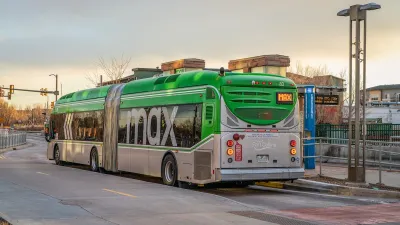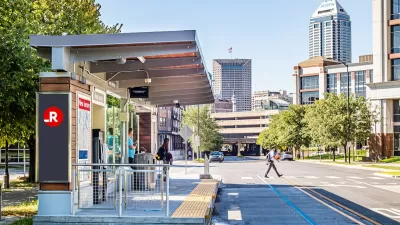During the last decade, bus rapid transit (BRT) has revolutionized regional transportation planning in much of the developing and developed world.
Bus Rapid Transit (BRT) went from being a fringe transportation option used in a handful of Brazilian and Australian cities to becoming a prominent mass transportation alternative for local and national governments.
Arguably the BRT concept with highest recognition is the provision of an exclusive right-of-way for bus transit coupled with high-frequency service. In South America, BRT systems in Curitiba, Brazil, and Bogotá, Colombia, feature networks of dedicated lanes designated for exclusive use by large-capacity, articulated buses, with expedited boarding and alighting.
"Twelve Latin American cities, three Australian cities, seven U .S. cities, eight Asian cities, and eighteen European cities have BRTs in place. Some are complete systems while others are single lines. Systems actively under construction also span the globe, including Dar es Salaam in Tanzania, Jinan in China, Bologna in Italy, Mérida in Venezuela, and Auckland in New Zealand."
From the conclusion: "Overall our results paint a mixed picture of the appreciation of prices due to BRT extensions. On the one hand, the evidence suggests price appreciation for properties already served by BRT, since they also benefited from the extensions. The estimated asking price premium is between 15 and 20 percent, although the appreciation began one year before the extension was inaugurated. This is significant, given that we know little about the potential magnitude of these effects. By contrast, we found limited evidence of asking price increases for properties along a corridor that previously did not have a local BRT station, but that now is served by the extension."
[Editor's note: You must login (free) to access the full PDF of this article.]
Thanks to Ann LeRoyer
FULL STORY: Land Value Impacts of Bus Rapid Transit

Planetizen Federal Action Tracker
A weekly monitor of how Trump’s orders and actions are impacting planners and planning in America.

Congressman Proposes Bill to Rename DC Metro “Trump Train”
The Make Autorail Great Again Act would withhold federal funding to the system until the Washington Metropolitan Area Transit Authority (WMATA), rebrands as the Washington Metropolitan Authority for Greater Access (WMAGA).

The Simple Legislative Tool Transforming Vacant Downtowns
In California, Michigan and Georgia, an easy win is bringing dollars — and delight — back to city centers.

The States Losing Rural Delivery Rooms at an Alarming Pace
In some states, as few as 9% of rural hospitals still deliver babies. As a result, rising pre-term births, no adequate pre-term care and "harrowing" close calls are a growing reality.

The Small South Asian Republic Going all in on EVs
Thanks to one simple policy change less than five years ago, 65% of new cars in this Himalayan country are now electric.

DC Backpedals on Bike Lane Protection, Swaps Barriers for Paint
Citing aesthetic concerns, the city is removing the concrete barriers and flexposts that once separated Arizona Avenue cyclists from motor vehicles.
Urban Design for Planners 1: Software Tools
This six-course series explores essential urban design concepts using open source software and equips planners with the tools they need to participate fully in the urban design process.
Planning for Universal Design
Learn the tools for implementing Universal Design in planning regulations.
Smith Gee Studio
City of Charlotte
City of Camden Redevelopment Agency
City of Astoria
Transportation Research & Education Center (TREC) at Portland State University
US High Speed Rail Association
City of Camden Redevelopment Agency
Municipality of Princeton (NJ)





























